Key takeaways:
- Scrum emphasizes iterative progress through sprints, fostering collaboration and productivity via the Scrum Master and daily stand-up meetings.
- Retrospectives are crucial for continuous improvement, enabling teams to reflect on successes and areas for growth, promoting a culture of openness and trust.
- Key components of retrospectives include creating a safe environment, utilizing structured formats like “Start, Stop, Continue,” and having effective facilitators to encourage participation and gather actionable feedback.
- Best practices for retrospectives involve time management, setting ground rules for transparency, and using visual aids to enhance engagement and retention of ideas discussed.

Understanding Scrum Methodology
Scrum is an agile framework that emphasizes iterative progress through small, manageable pieces of work called sprints. In my experience, embracing these time-boxed iterations has transformed how teams approach projects; there’s something incredibly satisfying about breaking down complex tasks into bite-sized goals.
One of the key components of Scrum is the role of the Scrum Master, who serves as a facilitator and coach for the team. I’ve found that having someone dedicated to removing obstacles can significantly enhance a team’s productivity, allowing everyone to focus on what truly matters—delivering value. When your team feels supported, it fosters an environment where collaboration flourishes.
Another interesting aspect to consider is the daily stand-up meetings, or Daily Scrums, where team members quickly discuss their progress and any challenges they’re facing. Have you ever noticed how these brief check-ins, which might seem trivial at first, can lead to powerful insights? In my own practice, I’ve witnessed teams evolve through these discussions, as they create a sense of accountability and shared purpose that often propels the project forward.
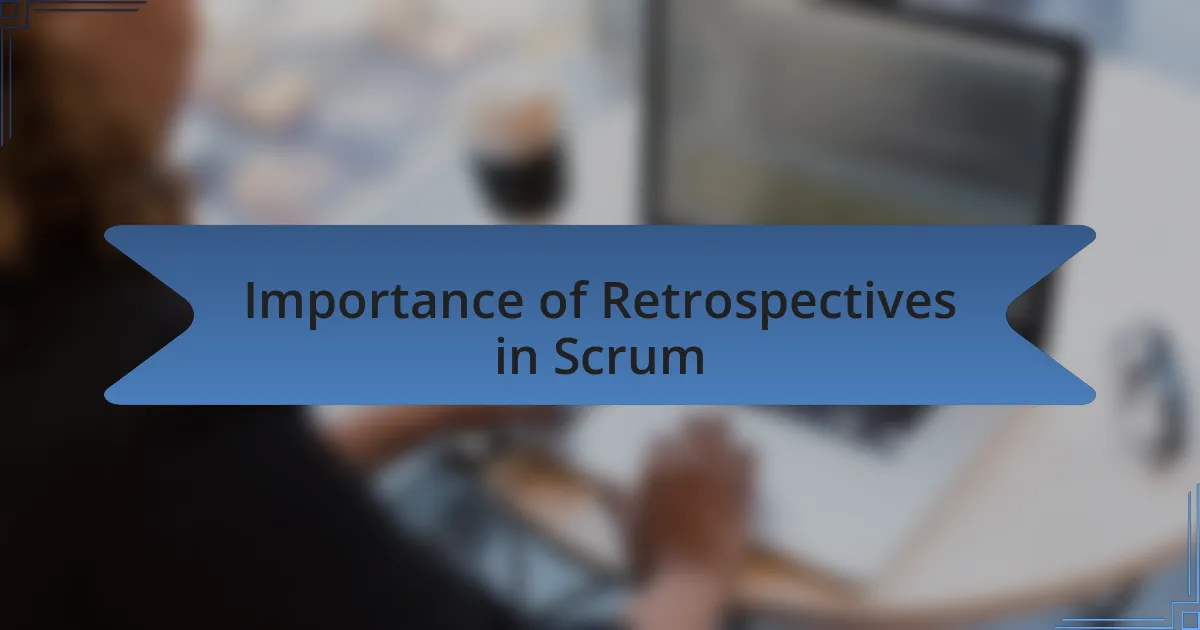
Importance of Retrospectives in Scrum
Retrospectives in Scrum hold immense importance as they provide a structured opportunity for the team to reflect on their work. I remember a specific sprint where we struggled with communication; the retrospective allowed us to air our concerns and pinpoint our collaboration issues. It was during that meeting that a team member suggested new communication tools that ultimately reshaped our workflow for the better.
What fascinates me is how retrospectives create a culture of continuous improvement. I’ve seen teams become more open over time, fostering trust and honesty during these sessions. It’s remarkable to think how a simple conversation can lead to actionable insights that drive quality and efficiency, making each sprint feel like a stepping stone toward excellence.
In essence, these reflections help in identifying not only what went wrong but also what went right, igniting motivation in the team. Have you ever felt the surge of inspiration after acknowledging accomplishments? I know I have, and that feeling of achievement can propel a team into the next sprint with renewed vigor and purpose. It’s these moments that remind us why retrospectives are not just a formality, but a vital part of the Scrum process.
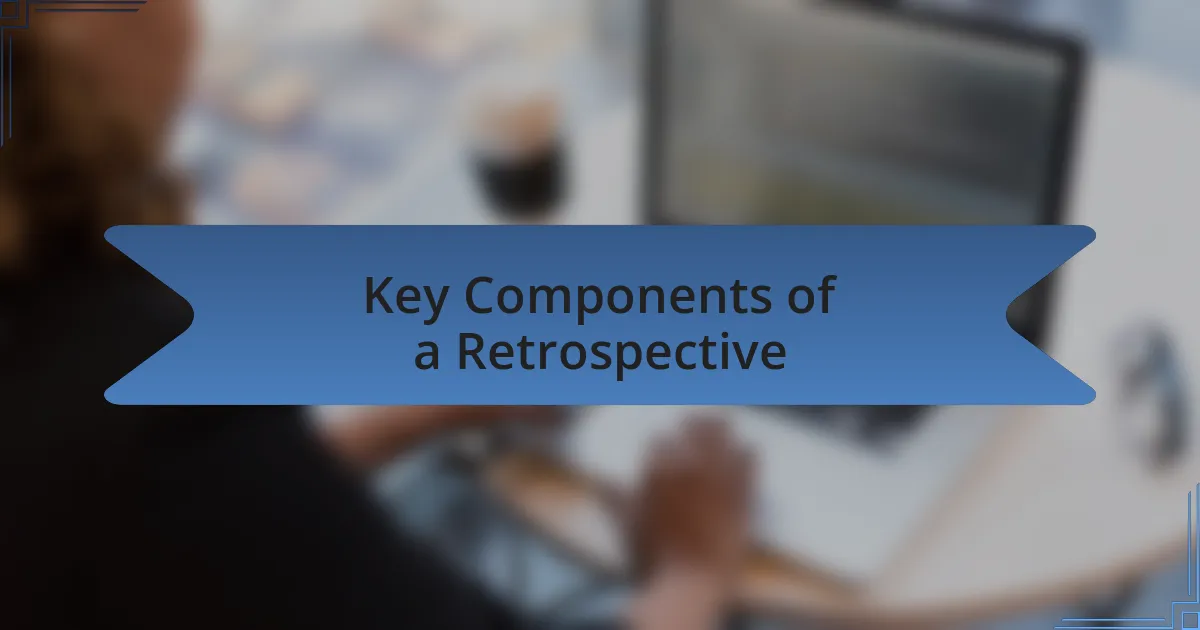
Key Components of a Retrospective
When I think about a retrospective, I immediately recall the trust-building exercises we incorporated. The key components of a retrospective often revolve around creating a safe space where team members feel comfortable sharing their thoughts. That sense of security encourages honest dialogue, helping to uncover deeper issues that might not surface in a more guarded environment.
Facilitators play a crucial role in steering these discussions. I’ve found that having a skilled facilitator can significantly influence the outcome of the retrospective. For instance, during one of my sessions, our facilitator used a round-robin format, which ensured everyone had an equal voice. This approach led to a surprising breakthrough, where a quieter team member shared a valuable insight that sparked a productive conversation.
Another essential component is the gathering of data or feedback from the sprint, which serves as the foundation of the discussion. I remember leveraging metrics like story points and sprint burndown charts, which grounded our conversation in facts rather than assumptions. Have you ever relied on hard data to guide your reflections? It can transform subjective feelings into actionable steps, making the process not just about feelings but about informed decision-making that propels the team forward.
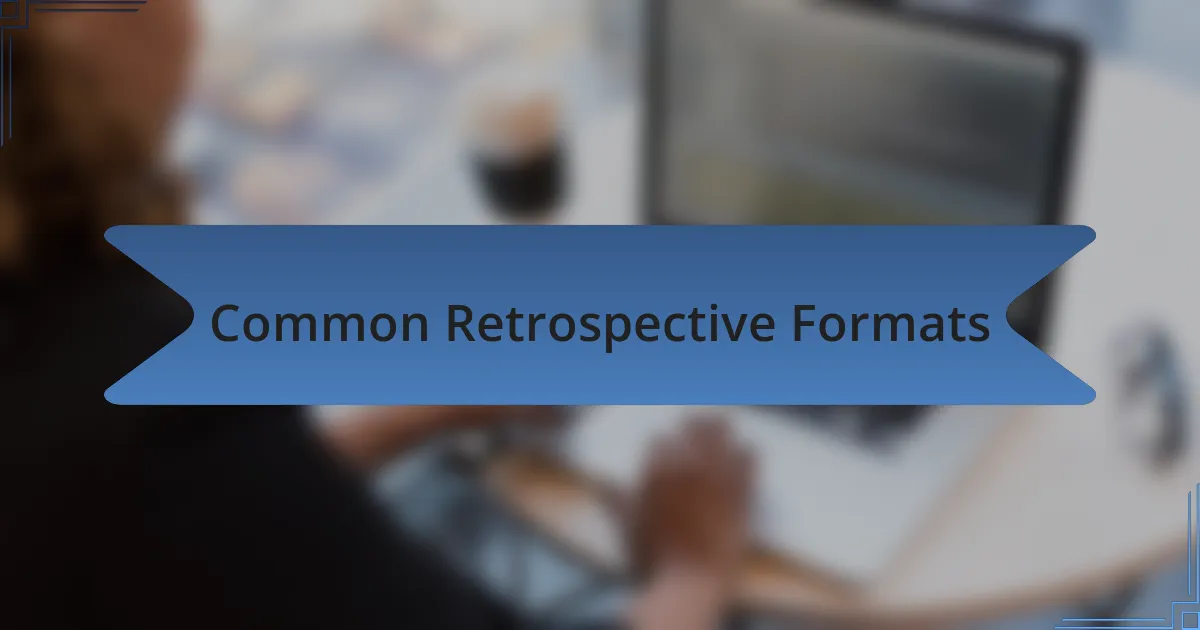
Common Retrospective Formats
When it comes to common retrospective formats, one method I particularly enjoy is the “Start, Stop, Continue” framework. It’s straightforward yet powerful, allowing the team to collectively identify practices to start implementing, things to stop doing, and those that are worth continuing. I remember a time when this format not only clarified our priorities but also led to a collective realization about a process that was draining our energy—something we quickly decided to stop.
Another engaging format is the “Sailboat” exercise, which I’ve found adds a visual element to discussions. In this format, we imagine the team as a sailboat, where wind represents positive forces propelling us forward and anchors symbolize obstacles holding us back. During one session using this format, a team member likened our work to navigating a stormy sea, which opened up a candid discussion about our shared challenges and triumphs. Isn’t it striking how metaphors can transform abstract ideas into relatable narratives?
Lastly, let’s not overlook the “4Ls” retrospective—Loved, Learned, Lacked, and Longed For. This format encourages team members to reflect not only on their successes but also on the aspects that could be improved or were missed. I recall a particularly impactful retrospective where we unearthed a longing for more collaboration with other departments. Surfacing that desire led to actionable initiatives that strengthened our connections outside the immediate team, enhancing our overall productivity and morale.
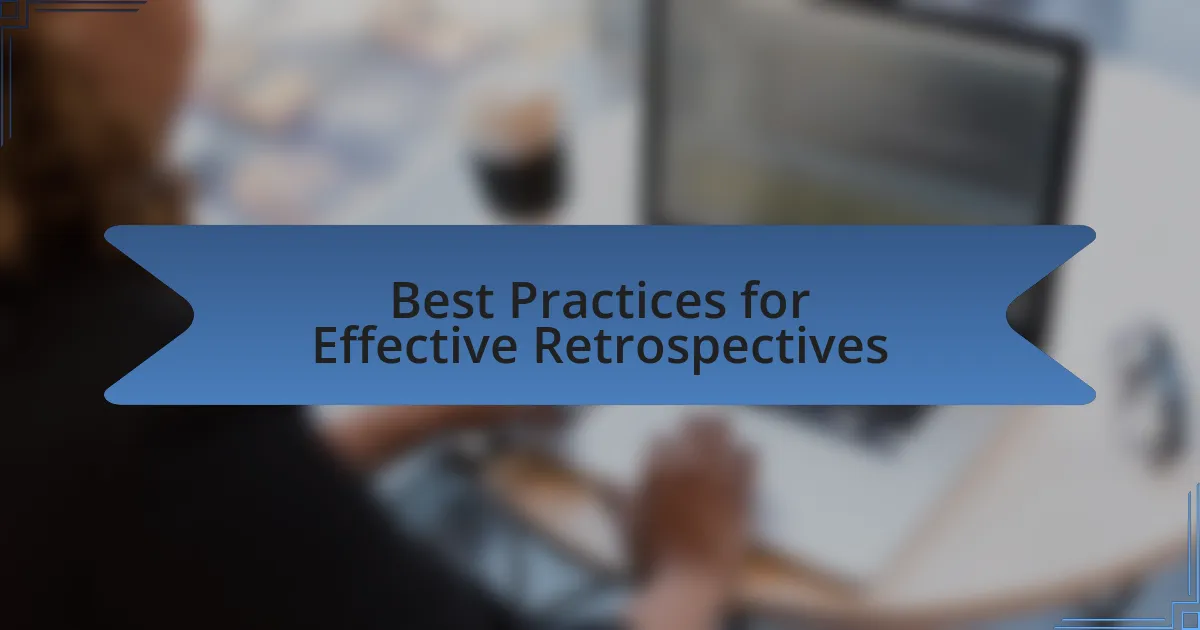
Best Practices for Effective Retrospectives
It’s essential to create a safe environment during retrospectives where team members feel comfortable sharing their thoughts. I remember a session where we had set ground rules for respect and openness. This led to a breakthrough moment—someone bravely shared their feelings about being overwhelmed, sparking a conversation that ultimately helped us redistribute workloads. Doesn’t it make you wonder how transparency can transform the dynamics of a team?
Another best practice is to ensure that retrospectives are time-boxed effectively. In my experience, it’s easy to let discussions spiral, leading to fatigue and disengagement. I’ve found that scheduling our sessions to run no longer than an hour helps maintain focus and energy. Short, productive bursts of conversation tend to yield more insights than lengthy, drawn-out meetings. Have you noticed how time constraints can sometimes drive clarity?
Lastly, utilizing visual aids can significantly enhance engagement and retention of ideas discussed. I once incorporated a simple online collaboration tool where team members could post sticky notes with their thoughts in real time. The excitement in the room was palpable as team members contributed dynamically. It truly transformed our retrospective from a monologue into a symphony of voices! Don’t you think having visual touchpoints makes it easier to remember key takeaways?
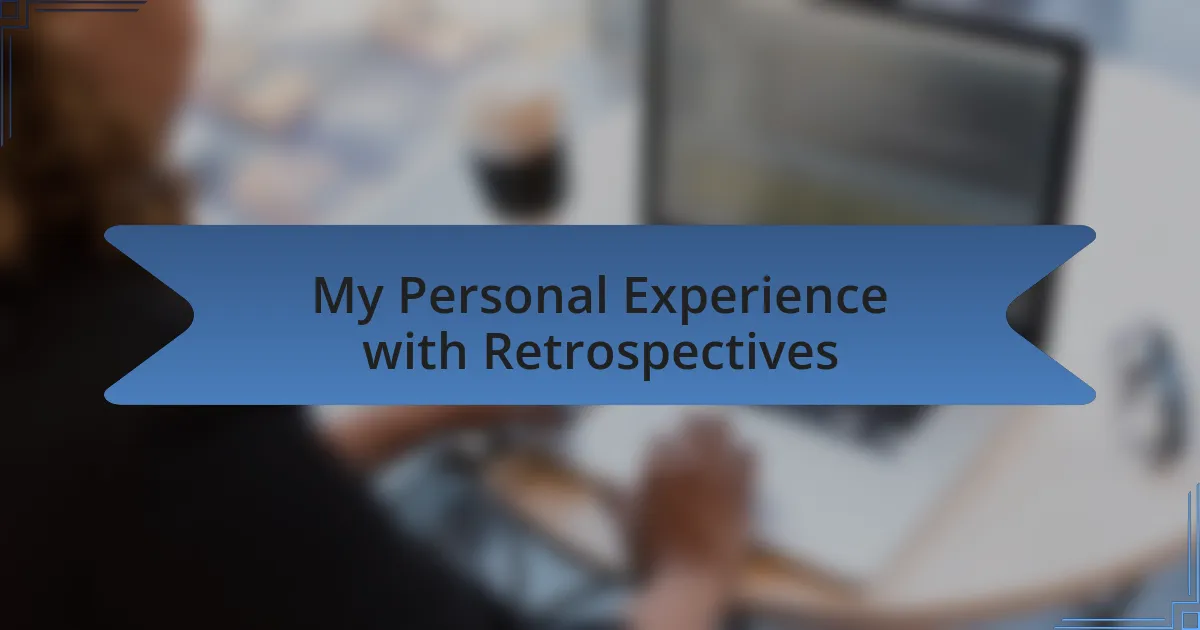
My Personal Experience with Retrospectives
Reflecting on my personal journey with retrospectives, I recall a time when I realized the power of a well-facilitated discussion. During one of my early retrospectives, I hesitated to share my thoughts, worried about how they might be received. However, when a teammate opened up about their struggles, it created a ripple effect that encouraged others, including me, to share. It was a reminder that vulnerability can build a stronger team bond—have you ever experienced that sense of connection when everyone feels heard?
One particularly memorable retrospective featured an exercise where we visually mapped our successes and challenges. I was amazed at how clearly we could identify patterns and areas for improvement. Witnessing my teammates’ enthusiasm as they engaged with the visuals inspired me to contribute my ideas more openly. Isn’t it fascinating how engaging methods can transform a room full of individuals into a cohesive unit?
Reflecting on these experiences, I’ve learned that retrospectives are not just about addressing issues but also recognizing accomplishments. In one session, we spent time celebrating a major milestone, and it shifted the entire tone of the meeting. As we shared our excitement, I felt a renewed sense of motivation and commitment to the team’s goals. It makes me wonder: how often do we take a moment to appreciate our wins as a team?
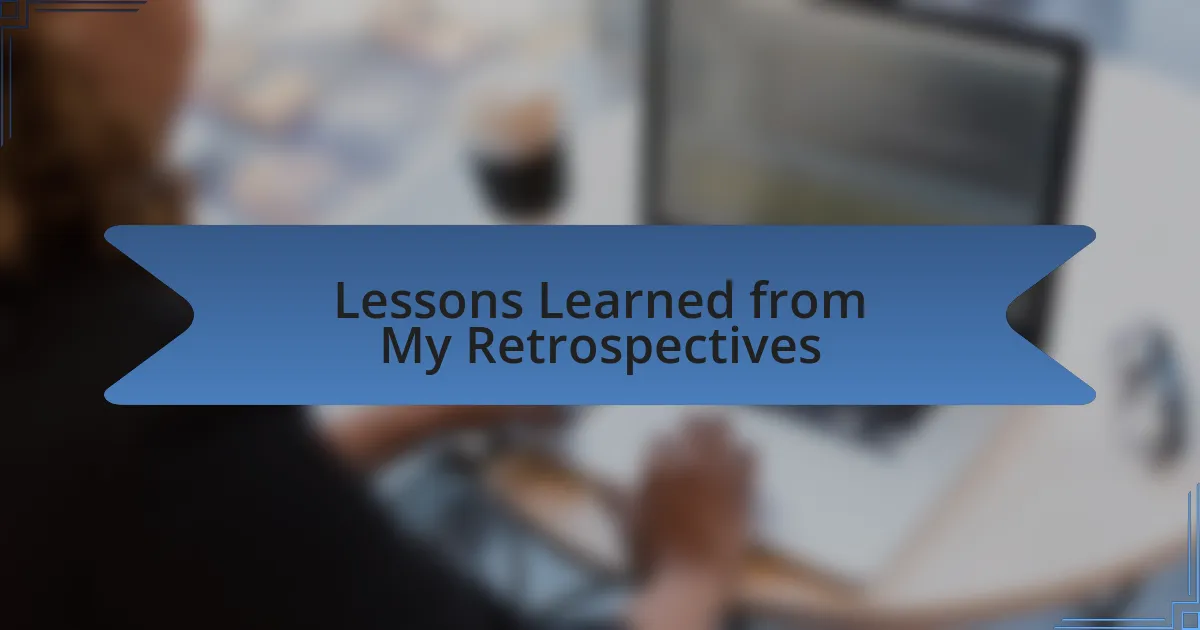
Lessons Learned from My Retrospectives
One crucial lesson I gleaned from my retrospectives is the importance of structured feedback. I recall a session when we tried a “Start, Stop, Continue” approach. This simple framework not only helped us articulate what was working and what wasn’t but also made it easier for everyone to voice their thoughts without fear. Have you ever experienced that moment when clarity flips the discussion from chaotic to constructive?
Another lesson centered around the idea of pacing. In one retrospective, we took too long dissecting a single issue, and the energy in the room began to dwindle. I learned that time management is key; it’s essential to keep conversations flowing so that we retain enthusiasm and engagement. How do you balance depth and breadth in discussions without losing momentum?
Lastly, I’ve discovered that action items should be meaningful and attainable. In a past meeting, we brainstormed a list of ambitious goals but ended up overwhelmed. It was only after we refined our list to focus on one or two key initiatives that real progress occurred. Have you found that narrowing down objectives fosters a stronger sense of accountability and achievement?